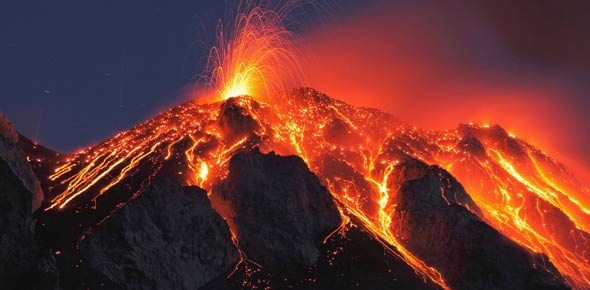Volcanoes Ch 10 Test

Volcanoes test read all questions
Questions and Answers
- 1.
Today people are never killed by volcanic eruptions
- A.
TRUE
- B.
FALSE
Correct Answer
B. FALSEExplanation
The statement is false because people can still be killed by volcanic eruptions. Although advances in technology and improved monitoring systems have helped to reduce the number of casualties, volcanic eruptions can still cause significant harm and fatalities. People can be killed by the direct impact of volcanic activity such as lava flows, pyroclastic flows, and volcanic gases. Additionally, volcanic eruptions can trigger secondary hazards like landslides, tsunamis, and lahars, which can also result in fatalities. Therefore, it is incorrect to say that people are never killed by volcanic eruptions.Rate this question:
-
- 2.
There is no relationship between plate tectonics and volcanoes
- A.
True
- B.
False
Correct Answer
B. FalseExplanation
The statement "there is no relationship between plate tectonics and volcanoes" is false. Plate tectonics and volcanoes are closely related as most volcanoes occur along tectonic plate boundaries. Volcanic activity is often caused by the movement and collision of these plates. For example, subduction zones, where one plate is forced beneath another, can lead to the formation of volcanoes. Additionally, mid-ocean ridges, where plates are moving apart, can also result in volcanic eruptions. Therefore, plate tectonics and volcanoes have a strong correlation and are interconnected.Rate this question:
-
- 3.
Gas trapped in magma under high pressuer can cause explosive eruptions
- A.
True
- B.
False
Correct Answer
A. TrueExplanation
When gas gets trapped in magma under high pressure, it can lead to explosive eruptions. The build-up of gas causes an increase in pressure within the magma chamber. Eventually, this pressure becomes too great for the surrounding rock to contain, resulting in a violent release of gas and magma. This explosive release can cause a volcanic eruption, with the force and intensity depending on the amount of gas and pressure involved. Therefore, the statement is true.Rate this question:
-
- 4.
Most igneous activity takes place above ground in volcanoes
- A.
True
- B.
False
Correct Answer
B. FalseExplanation
Most igneous activity actually takes place below ground in the form of intrusive igneous rocks, such as granite, which solidify beneath the Earth's surface. Volcanoes are just one manifestation of igneous activity, where magma erupts onto the Earth's surface, resulting in extrusive igneous rocks like basalt. Therefore, the statement that most igneous activity takes place above ground in volcanoes is false.Rate this question:
-
- 5.
Cinder cone produce quite eruptions
- A.
True
- B.
False
Correct Answer
B. FalseExplanation
Cinder cones actually produce explosive eruptions rather than quiet ones. These eruptions are characterized by the ejection of pyroclastic material, such as ash, cinders, and bombs, into the air. This is due to the high gas content and viscosity of the magma in cinder cones, which leads to pressure buildup and explosive eruptions. Therefore, the statement that cinder cones produce quiet eruptions is false.Rate this question:
-
- 6.
A volcanic neck forms when a volcano's core erodes
- A.
True
- B.
False
Correct Answer
B. FalseExplanation
A volcanic neck actually forms when a volcano's cone erodes, exposing the solidified magma in the volcano's conduit. As the volcano's cone erodes over time, the hardened magma in the conduit remains, creating a volcanic neck. Therefore, the statement that a volcanic neck forms when a volcano's core erodes is false.Rate this question:
-
Quiz Review Timeline +
Our quizzes are rigorously reviewed, monitored and continuously updated by our expert board to maintain accuracy, relevance, and timeliness.
-
Current Version
-
Mar 21, 2023Quiz Edited by
ProProfs Editorial Team -
Feb 25, 2009Quiz Created by
Snyder
 Back to top
Back to top


